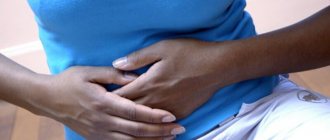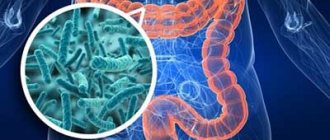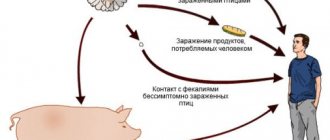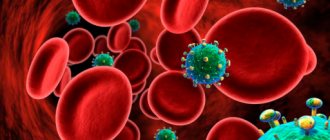Rotavirus infection is a rather dangerous disease; in many countries, where the level of medicine is quite low, it often causes the death of children. It is not easy to protect yourself from the disease, so you definitely need to know what measures you need to take to protect yourself and your child from infection. To do this, it is necessary to find out how rotavirus infection is transmitted from person to person - this will help prevent a dangerous disease.
Feature of the disease
Before determining how you can become infected with rotavirus infection, you need to determine exactly what this virus is. It gets its name from the Latin word rota, which means wheel. This group includes 8 varieties of rotaviruses.
The virus is enclosed in a triple, durable protein shell that protects it from digestive enzymes in the intestines and stomach. The virus multiplies on the mucous membrane of the intestinal epithelium. The incubation period generally lasts 1-5 days.
After penetrating the mucous membrane, the virus gradually invades cells and tries to make them a source for the development of new rotaviruses. In some cases, when penetration does not occur, the disease is completely asymptomatic. But often it manifests itself in an acute form.
Rotavirus in its symptoms resembles toxic poisoning, which is characterized by severe vomiting and diarrhea. In addition to disruption of the digestive process, a runny nose appears and redness of the larynx occurs. After this, the recovery stage begins, which lasts 3-5 days. In adults, rotavirus infection occurs much less frequently than in children. This is due to the fact that gastric juice is more aggressive. It tries to eliminate the virus immediately after it enters the body.
Rotaviruses are very stable in drinking water, where they remain viable for several months. They can live on the surface of fruits and vegetables for up to a month. They cannot be eliminated by repeated freezing. Even the use of disinfectant solutions does not always give the required result. However, the virus is killed by simple boiling.
How rotavirus spreads
Rotavirus infection is transmitted through direct contact and through objects. Isolation of the rotavirus pathogen begins on the fourth day of viral infection and continues until the twentieth day, when the person already looks completely healthy. Cases of the spread of viral particles have been recorded 60 and even 400 days from the onset of infection.
While rotavirus infection in children manifests itself clinically, adults are often asymptomatic carriers of rotavirus. A study of stool tests for rotavirus revealed that up to 20% of staff in hospitals and child care institutions spread rotavirus without showing external signs of the disease.
Rotavirus infection is transmitted in the following ways:
- the direct route of transmission of rotavirus infection from mother to child through breast milk or when passing through the birth canal of the parent;
- by airborne droplets when inhaling air containing viral particles released when coughing and sneezing. Often found in places where children are crowded (hospital ward, kindergarten group). Moreover, children can become infected initially from an asymptomatic adult carrier from among the organization’s employees;
- the infection is transmitted through shared objects - toys, clothing, medical instruments, food;
- The main route of excretion of intestinal influenza is through feces. Therefore, rotavirus is transmitted primarily through the fecal-oral route. The pathogen was found in large quantities of river and sea water, where it enters with feces. A patient’s unwashed hands after using the toilet leave viral particles on all surrounding objects.
The mechanism of transmission of rotavirus infection is as follows: from the carrier of the infection, the virus enters the oral mucosa, from there it is swallowed with saliva (along with food and drink) and enters the stomach. Rotavirus is resistant to hydrochloric acid. From the stomach it penetrates the duodenum, where it develops pathogenic activity. Rotavirus can live and multiply only in the epithelium of intestinal villi.
Causes
Answering the question of how one can become infected with rotavirus infection, it must be said that the disease is provoked by rotavirus, which belongs to the reovirus family and contains RNA enclosed between a double rough layer. These viruses are quite resistant to external factors. Many people are interested in where you can become infected with rotavirus infection. This can happen in absolutely any place, namely:
- in public toilets;
- in catering places;
- when visiting a pond or swimming pool.
The virus is found in different places and lives on different objects for a long time. The source of infection can be poorly washed vegetables or fruits, as well as meat that has undergone an insufficient level of heat treatment.
Infection concept
Rotavirus infection (rotavirus, intestinal flu) is a serious disease provoked by a specific RNA virus. The disease is seasonal, most often diagnosed in winter and spring.
Stomach flu occurs in both adults and children. However, babies, especially infants, suffer the disease more severely, and the symptoms of dehydration become more intense. In adults, the disease is severe in the presence of weakened immunity and other diseases.
Rotavirus is present everywhere, and under certain conditions can even cause epidemics. The harmful microorganism retains its properties for a long time, tolerates freezing for six months, and does not die under the influence of ethers, chlorine, formaldehyde, or ultrasound. Once in the body, it multiplies quickly and disrupts the functioning of internal organs.
Main symptoms
Having determined how you can become infected with rotavirus infection, you need to know exactly what symptoms are characteristic of this disease so that you can promptly recognize its course and consult a doctor. The incubation period generally lasts 5 days. The acute stage of the disease lasts 3-7 days, and then the recovery period begins. It lasts 5 days.
Rotavirus infection usually begins quite acutely. At the same time, the temperature begins to rise significantly. Therefore, after the virus enters the body, the child’s condition changes, and he begins to suffer almost immediately from all symptoms. High temperatures can lead to fever.
Due to the peculiarity of its symptoms, rotavirus is often called intestinal flu. The disease is also manifested by vomiting, which can be acute even with a proper and balanced diet. Sometimes there can be a severe stomach attack, which is manifested by cramping pain, diarrhea and rumbling in the stomach.
Another sign is a change in the nature of the stool. On the first day it is yellow and liquid, in subsequent days its color changes to gray-yellow. In addition, signs of rhinitis may appear. Gradually a sore throat and cough appear. This may cause problems with the oral cavity.
Transmission routes
The disease is characterized by prolonged shedding of the virus, sometimes even up to several months. Body fluids can contain a huge number of viruses. This makes it easy to become infected and allows for the development of mass cases.
The greatest danger is posed by people who have suffered a subclinical form of rotavirus infection. In this case, treatment was not carried out due to the poor clinical picture. The methods of transmission of an infectious disease can be varied. Let us highlight the main routes of infection with rotavirus infection:
- airborne. The pathogen can get into the air when coughing if it is in the nasopharynx. In the first days of the disease, the rotavirus is located in the nasopharynx, and then descends into the gastrointestinal tract;
- through water. The causative agent of rotavirus infection can get into the water along with feces and vomit. Tap water is often the cause of infection;
- through food. Rotavirus is found in dairy products. Active reproduction of the infection occurs on vegetables, fruits, meat and fish. Flies spread the infection;
- contact-household. Through unwashed hands, the causative agent of intestinal flu can get onto the surface of household items. It can also be carried by insects. For a whole month, the pathogen can be transmitted from the surface of household objects.
How many days is a person contagious? It is a source of infection during the incubation period and for several days after the first symptoms appear. Around the fifth day, the risk of infection gradually decreases. Virus shedding finally stops by the end of the third week.
People remain infectious for the first ten days after the first clinical symptoms appear. During this period, the person should be isolated. The reasons for the spread of infection may be a weakness of the immune system, especially for young children, whose defenses are still at the stage of formation.
It is also worth noting the connection between infection and the anatomical features of the intestine. During the research, scientists found that rotavirus easily attaches to the mucous membrane of the small intestine of a child, while the pathogen attaches poorly to the intestinal wall of an adult. Is it possible to get infected from animals? Experts say that people and animals are affected by different subspecies of rotaviruses.
Therefore, you can be calm, since animal viruses are not dangerous to humans. There are still documented cases of a person becoming ill after contact with an infected animal. Perhaps this applies to cases where a healthy person is a virus carrier. Contact between different subspecies of rotavirus can lead to activation of the pathogen. Currently, scientists do not exclude the possibility of direct infection.
Carrying out diagnostics
Many people are interested in how one can become infected with rotavirus infection. This happens when you come into contact with an infected person, as well as when using things that have the virus on them. It is very important to diagnose the disease at the initial stage, as well as carry out comprehensive treatment.
Like any other infectious disease, rotavirus can be detected during laboratory testing. Often, the patient’s vomit and feces, as well as blood, are used as material. Rotavirus is diagnosed by taking a general blood test. In this case, you will see:
- increase in leukocytes at the onset of the disease;
- a decrease in their norm during the peak period;
- the erythrocyte sedimentation rate does not change.
Protein is found in the urine, as well as red and white blood cells. When performing a biochemical analysis, an increase in serum nitrogen is observed.
Fecal analysis helps determine digestive disorders, since stool during the course of the disease contains a lot of undigested fiber, starch and fat. It becomes light in color and the urine becomes dark. The virus can also be detected using a rapid test. This method is good because it does not require a high concentration of rotavirus. It requires no more than 15 minutes, which is very important for this disease.
Clinical picture without fever
In this case, the signs of rotavirus infection are usually quite mild. This pathology without fever is much more common in adult practice .
To accurately diagnose the disease, you need to take a stool test or undergo a rota test, which you can purchase yourself at a pharmacy. But an experienced doctor can diagnose such a disease based on a combination of general signs and complaints. When examining the patient, pain is detected in the epigastrium and around the navel, as well as rough rumbling. During the acute period, patients have a decrease in the amount of urine in which protein, leukocytes and red blood cells are found.
Features of treatment
It is important not only to know exactly how children become infected with rotavirus infection, but also how treatment is carried out. It is worth noting that there are no drugs that can quickly and effectively destroy the virus. However, you can try to reduce the existing symptoms, which cause significant discomfort to the child.
To prevent severe dehydration, rehydration therapy is necessary. It involves consuming a fairly large amount of liquid. You can also take a saline solution. It is prepared by mixing 1 tsp. salt and 1 liter of clean water. The liquid should be drunk in small sips, approximately 50 ml every 30 minutes. In some cases, it is administered intravenously, especially with severe symptoms with increasing intoxication.
There may be toxins in the intestines that need to be removed using sorbents. When treating rotavirus infection, Smecta, activated carbon, and Enterosgel are used. It is possible to restore normal intestinal function only by taking a large amount of sorbents.
After rotavirus, it is necessary to restore the digestive organs, for which enzyme preparations are used. The temperature should be reduced only if it rises significantly and is difficult to tolerate. Children are prescribed syrups and suppositories for this. You should use only those medications prescribed by the doctor, strictly observing the dosage.
How to bring down the temperature
If the temperature is below 38 degrees, there is no need to bring it down provided the patient is feeling normal. To reduce fever, use Tsefekon suppositories (suitable for children up to one year old).
Older children are given Paracetamol. If it doesn't help, give Paracetamol in combination with a quarter of Analgin. Keep a break between tablets. At least 2 hours.
Rubbing with a weak solution of vodka helps. Follow the rule - wipe your body, do not allow temperature changes. Rubbing begins if more than 30 minutes have passed after taking the pill and no relief has occurred.
In order not to become infected with rotavirus, communication with the patient is limited - the transmission mechanism is fecal-oral: through hands, things, surfaces. If treated correctly, the virus goes away quickly and no complications arise. Contact with children is prohibited to avoid infecting them.
The virus that provokes the onset of the disease dies at 38 degrees. Medications that reduce fever are used. A vodka solution will help - rub the body with the product.
Symptoms and treatment for adults
How do adults become infected with rotavirus infection? How exactly does their disease progress? The penetration of the virus into the body occurs in almost the same way as in children. The main routes of transmission of rotavirus are through dirty hands or poorly washed food. It is also important to understand whether rotavirus infection can be re-infected. This is quite possible when consuming contaminated food products, in particular dairy products. This is due to the specifics of its production.
Rotaviruses feel quite normal in the refrigerator and can live there for several days. Even chlorination of water does not destroy them. Many people are interested in how you can become infected with rotavirus infection from a person. Just like the flu virus, it is spread by droplets, for example, by coughing or sneezing.
In adults, the infectious disease is much milder than in children. It is characterized by such features as:
- loose stools;
- loss of appetite;
- temperature increase.
Often in adults, symptoms go almost unnoticed. Therefore, many do not even think about how exactly this disease is treated. However, when the first signs appear, therapy must be carried out, since this infection is transmitted even through ordinary household contact.
Answering the question of how many days can it take to become infected with rotavirus infection if there is a sick person in the house, it must be said that this usually happens within 3-5 days. You can only prevent infection from an infected person if you have active immunity. No special treatment is required in adults. Therapy is symptomatic.
How is the infection transmitted in adults?
Doctors are often asked the question of how infection is transmitted in adults. As has been proven through medical tests, there are many ways of infection, and it is quite difficult to protect yourself from the disease. You can only try to reduce the risk of disease, and for this there are several simple rules.
In what ways can you catch dangerous bacteria? There are quite a few options for infection:
- dirty hands,
- swimming in a polluted pond,
- through household items,
- during sexual intercourse,
- when kissing (especially if the patient has an incubation period),
- when using some household items,
- when staying in a medical facility (hospital),
- when in the same room with an infected person.
The disease poses a particular danger for adults - they often do not even pay attention to the illness, not suspecting that they are becoming sources of infection. That is why doctors do not recommend refusing the help of a doctor and going to him at the first signs of illness. Only an examination and accurate diagnosis will prove how well-founded the suspicions are and whether you should protect your family and friends by avoiding contact not only with them, but also with common household objects.
Rotavirus during pregnancy
Women expecting a baby are also not immune from infection and can catch the virus at any time. It is very important to understand exactly how long it takes to become infected with rotavirus infection through contact with a sick person. This will allow timely attention to the presence of the virus in the body, as well as treatment to prevent the development of complications. A sick person remains contagious for 3-5 days after symptoms disappear, so special care must be taken during pregnancy.
Symptoms and treatment for pregnant women are exactly the same as for all other patients. The infection will not harm the fetus, but dehydration is a big danger. It can lead to insufficient oxygen supply to the fetus. This can have a very detrimental effect, since oxygen is very important for the child. In the worst case scenario, this can lead to miscarriage or premature birth. However, you shouldn’t stress yourself out and worry too much. It is important to ensure proper treatment.
To avoid severe dehydration, you need to constantly replenish your water-salt balance. To do this, it is important to constantly consume plain or mineral water, compote or dried fruit juice. It is also worth observing bed rest.
To speed up the removal of infection from the body, absorbent agents are well suited. To do this, you can use activated carbon, Smecta or Polysorb. They do an excellent job at the task.
During pregnancy, it is also important to follow a strict diet. Foods that irritate the intestines should be excluded from the diet. These include fried, sweets, smoked, salty, and dairy products.
How does infection pass from person to child?
For a small organism, the danger lies in an adult who has already become infected with a dangerous infection, because bacteria in the room do not die for a long time. How is infection transmitted from person to child and is it possible to protect the baby from the disease?
Usually, short contact with a carrier of bacteria is enough to catch the disease. Even the absence of communication with the patient does not guarantee complete protection, because things and objects that the infected person has touched will certainly remain in the room. It only takes a few harmful organisms for a baby to catch the disease.
The carrier of the disease is especially dangerous in the early stages of the disease. If bacteria have accumulated in the nasopharynx, even a short coughing attack is enough for them to scatter throughout the room.
Nutritional Features
Answering the question of how a child or adult can become infected with rotavirus infection again after recovery, it must be said that food products, in particular milk and dairy products, pose a great danger. Therefore, it is important to follow a certain diet. You can consume vegetable puree, porridge with water, baked vegetables, and yeast-free bread.
A few days after complete recovery, you can eat a sweet apple. Whole milk and milk porridges, high-fat animal proteins, sour berries and fruits are prohibited.
One of the consequences of rotavirus is lactose deficiency. It is manifested by insufficient absorption of milk sugar. As a result, bloating, loose stools, and flatulence are observed. This may last 2-3 weeks.
Diet during rotavirus infection
It is very important to follow a diet during illness, which will reduce the manifestation of gastroenteritis in the body. This, in turn, will reduce the likelihood of dehydration. During your illness, you should completely eliminate dairy products from your diet, which can cause diarrhea. Food should be boiled or steamed. The greatest attention should be paid to the consumption of liquids. To avoid dehydration, it is advisable to use special solutions sold in pharmacies. If it is not possible to buy them, then you can make such a composition at home. To do this, you need to take a liter of boiled water and add 1-2 teaspoons of salt and 2-3 tablespoons of sugar to it. This solution can be stored for no more than a day. The diet after the end of the illness should also be lactose-free so that intestinal function normalizes. It is necessary to return to a normal diet gradually.
Thus, rotavirus can appear in any person. Its treatment should begin immediately, since the effectiveness of all procedures performed depends on this. You cannot self-medicate, since only a doctor can determine which medications to use.
Possible complications
It is necessary to clearly not only understand how children and adults become infected with rotavirus infection, but also what complications the disease may have. With proper therapy, it proceeds without complications. If the child is often not given water, the body may become quite dehydrated, even leading to death.
If measures are not taken in a timely manner, a bacterial intestinal infection may occur. Then the disease will be more difficult. It is important to monitor the child’s body temperature, since a prolonged increase above 39 degrees can lead to cell death. Death occurs in approximately 2-3% of cases and mainly in children with poor health.
Fighting rotavirus
When treating rotavirus, remember: it is not destroyed by antibiotics that are harmful during intestinal flu, eliminating non-pathogenic bacteria. There are three principles for treating intestinal flu:
- The danger with rotavirus is dehydration - it leads to organ damage. It is necessary to fight it, provide the patient with plenty of fluid, purchase it at a pharmacy or prepare a rehydration solution yourself.
- Cleanse the body of toxins remaining in the body after rotavirus, follow a strict diet, and at the onset of the disease, avoid dairy products and those containing lactose. Rotavirus kills the enzymes that break down lactose; dairy products aggravate the symptoms of the disease. The patient will tell you what diet is appropriate to follow. When appetite is restored, the person chooses the desired food. Avoid fatty, salty, smoked foods, so as not to injure the damaged vessels of the intestinal walls.
- The microflora of the affected intestines can be restored and maintained normally with the help of probiotics and vitamins.
The rehabilitation period for rotavirus infection takes from a couple of weeks to a month and a half. Residual effects of intoxication are observed: drowsiness, fatigue, lightheadedness.
Rotavirus intestinal infection causes significant harm to the fragile digestive system of infants. Breastfeeding increases your chances of getting rid of unbearable symptoms of the disease faster.
After rotavirus infection, you should not visit public places, playgrounds, or transport. Thoroughly disinfect living quarters, the patient’s belongings, toys, and bed. There are cases when several people in a family become ill, and after one person is cured, re-infection occurs if the incubation period for others has not ended.
Proven prevention against rotavirus in children and adults is personal hygiene and a healthy lifestyle. After suffering from intestinal flu, the body develops immunity to the virus (not the group of rotaviruses). Mild re-infection is possible.
It is very important to suspect early symptoms of rotavirus infection in a timely manner. This can help prevent the development of dangerous complications in the future. This article will help you understand how long the incubation period of the disease lasts, as well as the duration of the disease.
How long does it take for re-infection to occur?
Some people ask whether it is possible to become infected with rotavirus again. After what time can this happen, because constant and strong immunity is not preserved. Therefore, to the question of whether it is possible to become infected with rotavirus infection again, the answer is unequivocal - it is quite possible to get sick a second time.
Immunity lasts for a short time, so you can get sick more than once. Rotavirus infection can only be re-infected after a few weeks.
Incubation period
All ways of infecting people with rotavirus infection were described above. In addition, it is important to know what the incubation period for this disease is. The incubation period of this disease is about 16 hours. The countdown starts from the moment of infection. After 16 hours, the infected person begins to show the first symptoms of illness. You should know these signs of the disease so as not to confuse rotavirus with other infectious diseases (for example, ARVI).
Carrying out prevention
Is it possible to become infected with rotavirus infection again? We have already found out that this is quite possible. That is why it is necessary to carry out comprehensive prevention. There are vaccines that help prevent the development of the virus in the body. Other preventive measures include methods such as:
- compliance with personal hygiene rules;
- proper processing of products;
- selection of dairy products.
It is very important to observe the rules of personal hygiene. To do this, it is important to wash your hands before eating, after visiting the toilet and public places. Products should be handled properly to remove infection. To destroy the virus, it is important to wash vegetables and fruits with hot water, as it is killed when exposed to high temperatures.
Particular attention should be paid to dairy products, since this is where most bacteria develop. Therefore, when purchasing it, you need to pay attention to the expiration date and storage conditions.
Knowing how rotavirus is transmitted, you can eliminate the possibility of it entering the body. All preventive measures taken help to exclude the occurrence of other infections in the body. If the first signs of illness occur, you should immediately consult a doctor.
Komarovsky about rotavirus
Dr. Komarovsky notes: with watery diarrhea, it is necessary to replenish lost fluid. Dehydration is considered a dangerous consequence. With diarrhea, the body loses copious amounts of water. Urine production decreases, blood pressure drops, convulsions occur, and damage to the nervous system occurs.
E. coli causes pneumonia regardless of where the child gets sick - at home or at school. The main causative agent of pneumonia is a lack of fluid in the body. Due to deficiency, the lungs become infected.
Antibiotics do not need to be prescribed to a sick child - they will not destroy the bacteria that caused the infection. Capable of suppressing the growth of protozoa. An antibiotic is prescribed if blood appears in the stool, during cholera, giardiasis.
First aid
Rotavirus infection can manifest itself:
- nausea;
- vomiting;
- diarrhea (diarrhea);
- abdominal pain;
- bloating;
- increased body temperature;
- general weakness;
- headaches;
- dizziness.
The manifestation of the disease in children and adults is different; rotavirus intestinal infection has its own symptoms in each case, which determines the difference in treatment.
When affecting children, rotavirus is aggressive and quickly manifests itself as acute symptoms of malaise, fever, and diarrhea. An adult often does not consider himself sick; he suffers mild cold symptoms and minor diarrhea on his feet without leaving his workplace. In fact, they themselves are sick, and can transmit the virus to members of the team, bring the infection to the family, to their children.
Rotavirus intestinal infection is especially severe in children under 2 years of age, manifests itself in severe symptoms, and requires special treatment. This is due to the age of the children.
Children are characterized by a severe picture of clinical manifestations:
- temperature rise to a critical level, often above 38.5-39.7 °C;
- repeated vomiting;
- frequent debilitating diarrhea.
Interesting! The best pain reliever for menstruation
Symptoms increase as the disease progresses, and each child’s reaction to the virus is different. If the disease begins in an infant, he is immediately hospitalized in the infectious diseases department. In children under 3 years of age, the disease is especially difficult, so they are offered inpatient treatment, but treatment at home is excluded.
The algorithm for parents' actions when rotavirus infection is detected has been worked out in pediatrics and in adult practice. When children show signs of rotavirus in an uncomplicated form, how to treat it at home should be clear to parents. First of all, it is important to prevent dehydration, especially in an infant.
Basic first aid actions at home:
- Give warm drinks often, but not in large quantities. Eliminate dairy products completely. Use regular filtered water, alternating it with saline solutions; you can give pharmaceutical solutions of Regidron, Oralit, Glucosolan to drink. They are diluted at the rate of 1 liter of water – 1 sachet of powder;
- If a child goes to the toilet every 3 hours, then the water intake is sufficient to prevent dehydration. When it is not possible to give a child something to drink, he does not swallow water even from a measuring syringe, he spits it out, or, worse, he vomits from the water, so urgently call an ambulance.
- Small children are placed on their side so that during attacks of vomiting, the masses do not enter the respiratory tract, which often happens in an infant, and he chokes on vomiting.
- Antipyretic medication should only be given at temperatures above 38.5°C.
- Avoid feeding. If children 4 years old develop an appetite, they can be given a little liquid porridge or pharmacy fruit puree.
- If the disease occurs in an infant, it is recommended to leave a diaper with feces until the doctor arrives; for children 5 years old, leave a filled potty. The doctor will more accurately determine the type of disease based on the contents of stool.
Parents often make mistakes and give their children antibiotics, antibacterial, and antidiarrheal drugs. In the case of rotavirus, they are powerless; taking them can aggravate the child’s condition and cause unforeseen complications. Before the doctor arrives, do not give your child folk remedies.
How does infection occur?
During rotavirus infection, there is a standard cycle of virion replication in the human body. The pathogen multiplies in the epithelial cells of the upper intestines, which die in large numbers. They are replaced “urgently” by immature epithelium, which cannot absorb water. The result is loss of fluid and electrolytes.
After an infection, intestinal recovery usually ends by 5–8 weeks, except for secondary dysbiosis, which must be corrected. As for the various variants of the course and classification, there are two forms of the disease - typical and atypical:
- the typical form is gastroenteritis with all the classic symptoms, which will be discussed in detail below”; it can occur in mild, moderate or severe form;
- the atypical form is the most dangerous in epidemic terms, especially in adults.
There may be a mild course (in which there is an episode of loose stools during the day) or completely asymptomatic, in which the virus multiplies in the intestines without causing diarrhea. This has been proven by studies during outbreaks of infection, when healthy contacts not only isolated viruses in the feces, but also recorded a significant immune response.
The precursor to the development of the disease is enteritis, which is formed when rotavirus enters the lumen of the small intestine. Traditionally, this condition manifests itself in two main stages: first, signs that are similar to ARVI make themselves felt, and then gastric disorders join them.
The average duration of the disease is 4-5 days; in rare situations, the process of complete recovery occurs in only 10-12 days. In some adults, this condition is associated with pain; as a result, they have to be admitted to the inpatient department with a general diagnosis called “acute abdomen syndrome.” In 30% of situations, this disease occurs without any symptoms.










